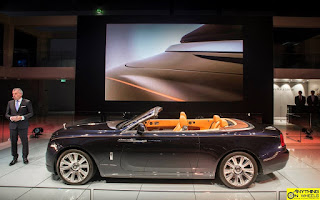When Renault unveiled the Kwid for India earlier this year, we were super excited and went as far as to proclaim this as the ‘next big thing’ in the Indian automotive industry. That could well be true as Renault launched the Kwid today at a mouthwatering starting price tag of INR 2.57 Lakhs. Yes, you read that right! That’s not all. The Kwid would be available in six variants - Std (2.56 Lakhs), RXE (2.89 Lakhs), RXE(O) (2.95 Lakhs), RXL (3.11 Lakhs), RXT (3.44 Lakhs) and RXT(O) (3.53 Lakhs). When Renault harped on 98% localization levels, we thought it was just marketing jugglery. Boy, have they proved us wrong!
At these prices, alarm bells would soon start ringing at rivals Maruti-Suzuki and Hyundai, with the Alto and Eon likely to be the major affected parties here.
With the Kwid, Renault has broken new ground by taking a completely fresh approach on what an entry-level small car should look like. Smartly incorporating key SUV design elements like high ground clearance and black plastic cladding all around, the Kwid boasts appealing proportions that are sure to impress the car-buying public in India. Renault’s trademark slotted grille, the simple yet smart headlights, the pronounced wheel arches and the chunky rear bumper ensure the Kwid doesn’t lose the plot due to its tall ride height. There are certain angles from which the Kwid looks a bit odd but then, the Eon and Alto look odd from some angles too. If butch looks for less than 5 Lakhs is what you are looking at, look no further than the Kwid.
At first glance, the Kwid’s interior design and layout might not impress but wait until you read the features on offer. Wearing a two-tone grey and black combination, the cabin features an all-digital instrument cluster, a 7-inch touchscreen Media-NAV infotainment system with USB, Aux and BlueTooth connectivity and piano black inserts, things that we don’t see in cars a segment or two higher. The tall proportions liberate loads of space inside with headroom and legroom easily emerging the best in segment. Renault has added a lot of cubbyholes and storage spots in the cabin, making it an extremely practical place to be in.
Doing duty under the Kwid’s hood will be a new 799-cc, 3-cylinder petrol engine with 53 horsepower and 72 Nm of torque. The engine displacement as well as the power and torque figures are par for the segment and should be capable of hauling the Kwid and its occupants along nicely.
Sadly, safety isn’t a priority in this segment and the Kwid does not try to change this aspect. ABS and passenger side airbag isn’t available even as an option on the entire range while only the top-end RXT variant gets an optional driver’s airbag.
With its butch looks, several segment-first features and incredible pricing, the Kwid should easily find its way to the top of the sales charts. It might not end up challenging the Alto yet but the Kwid definitely has what it takes to unsettle the segment and taking a big pie off the Eon and Alto every month.













































